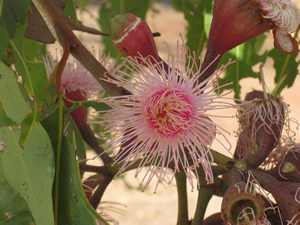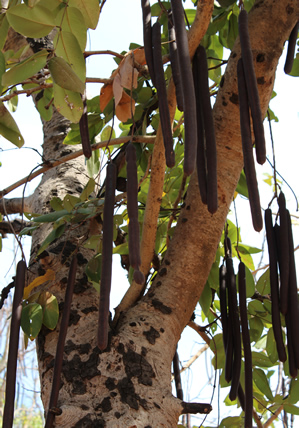Lets take a look at some of the unique plant features found in Arnhem Land in the N.T. of Australia.
Pictured on the right is the lonely Kapok Bush( Cochlospermum fraseri), found in Kakadu and Arnhem Land. It is deciduous, drops its leaves, during the dry season at which bright yellow flowers bud from its lifeless looking branches. These flowers are used as a food source by indigenous people and can be eaten raw or cooked.
We are all accustomed to the word fruit as a been a sweet, juicy seed carrying structure of a plant. In the Outback, however, where water is scarce during the dry season, this image of a fruit can not be further from reality. Rarely do plants adapted to living in the Outback produce juicy fruits, instead, their fruits are dry and filled with seeds.
The fruit of the plant consists of dry pods filled with a fibrous, cotton like material designed to disperse seeds via wind.
Before attempting the questions below you may wish to detailed images of the following.
Kapok Bush
Immature fruit
Mature fruit.
Mature fruit opening
Why do you think the Kapok Bush is deciduous in the dry season?
Look at the picture on the right. It is rare to see Kapok Bushes next or even near each other. Explain why this is advantageous.
How does the Kapok Bush ensure that no two bushes grow near each other?
How do you think the flowers are pollinated?
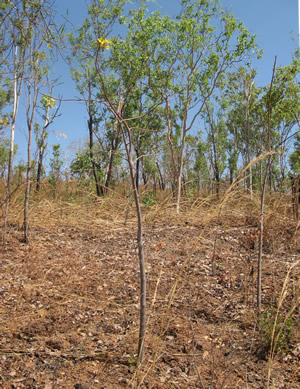
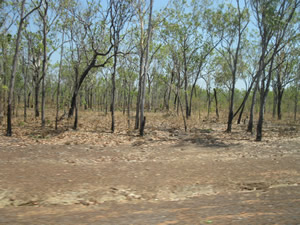
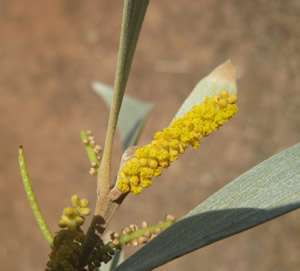
Consider the beautiful flowers of the Bush Apple tree found in Arnhem Land. Click on the picture for a detailed view. At the centre of the flower sweet nectar accumulates.
How do you think the flower becomes pollinated? Explain.
Like most plants the fruit becomes dry. How are the seeds dispersed?
Some trees have long dry seed pods.
These seed pods fall to the ground when they a ripe and have dry, sweet tasting flesh inside.
How do you think the seeds are disperesed?
Click on the image for a detailed view. Look at the leaves of this plant, they are thick. How might this help in survival?
